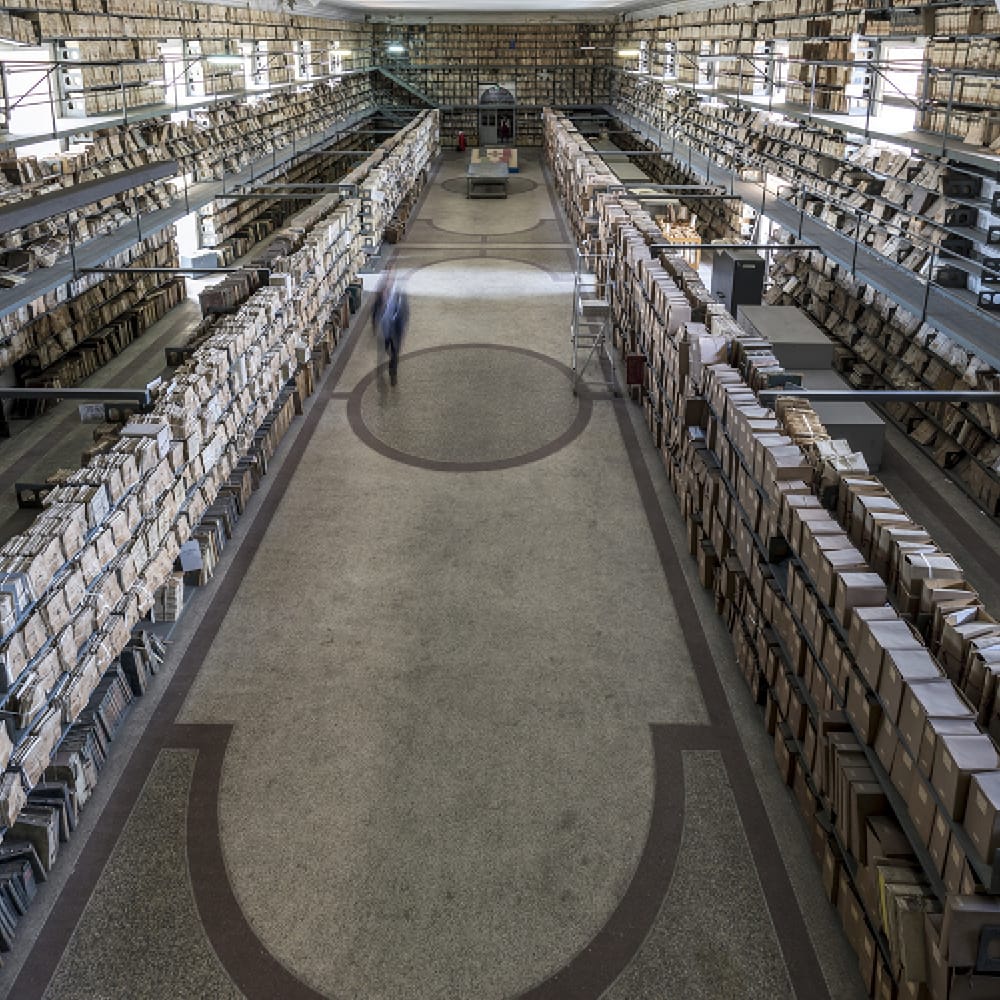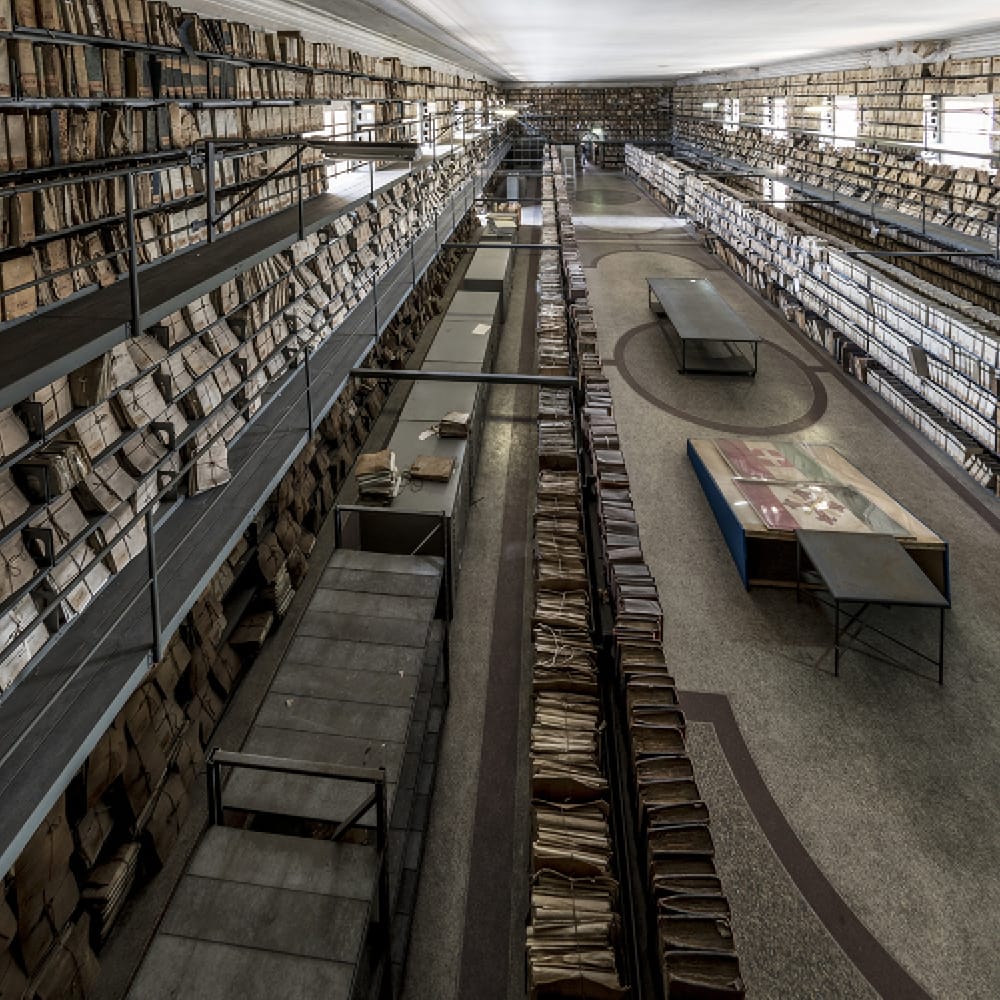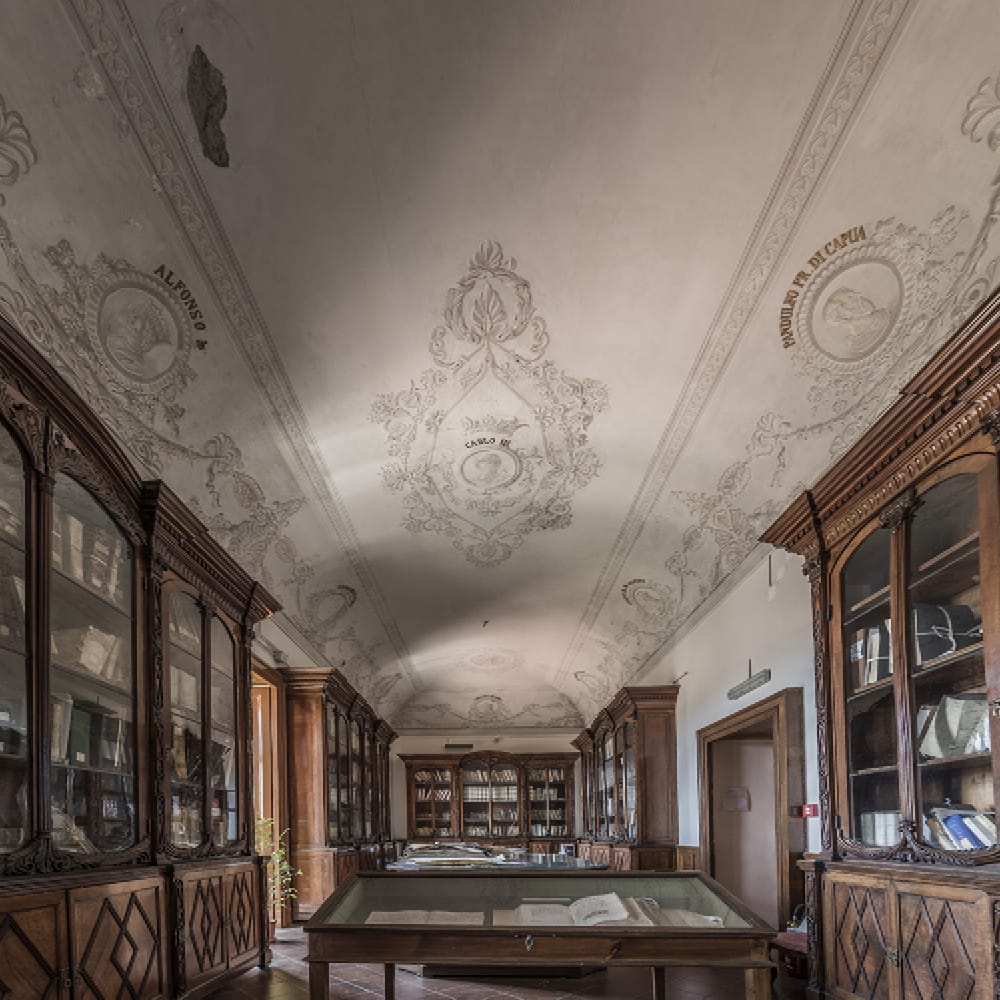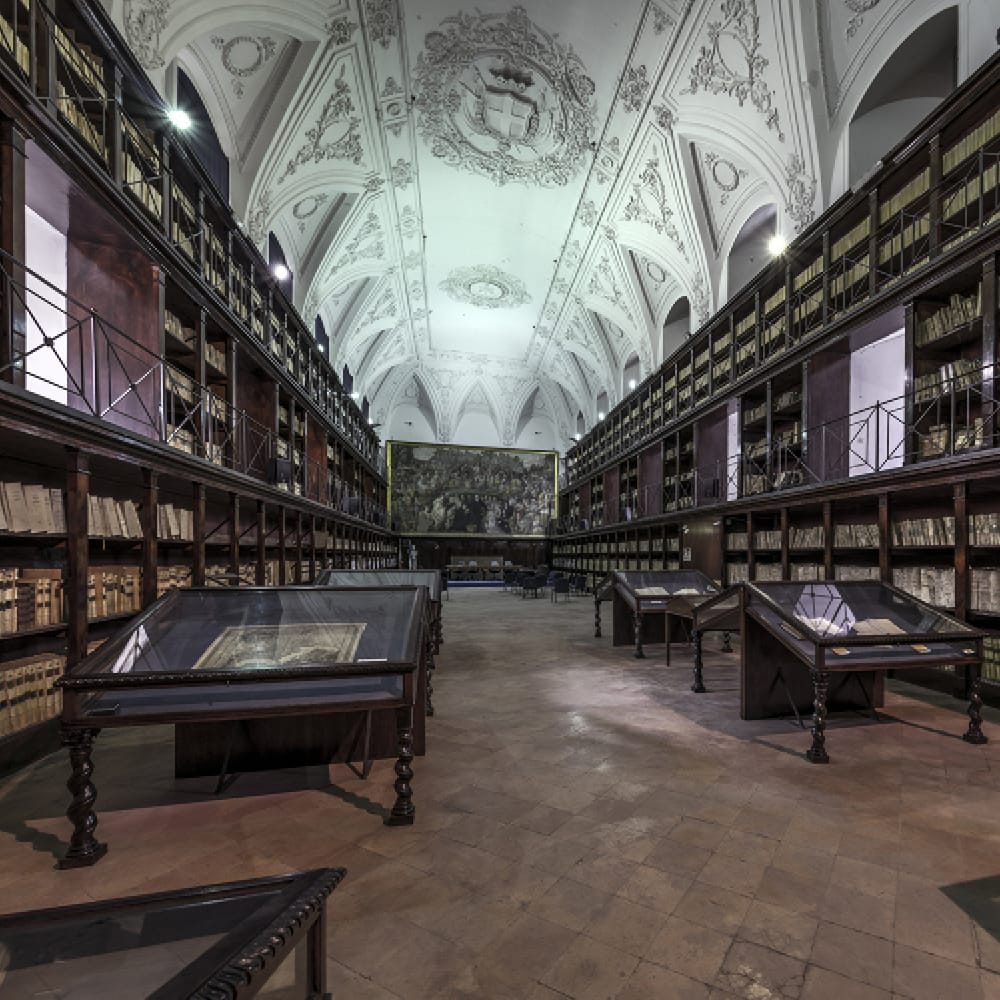The State Archives of Naples, incardinated into the the Historical Archives Service, is located in the former Retreat of Santa Maria della Purificazione and Saints Joachim and Anna in Pontenuovo (Salita Pontenuovo n.31)
“To enhance an archive with the importance of that of the Municipality of Naples, it is not enough to order it, provide it with indexes and organize it in such a way that scholars are widely assisted in their research, it is also necessary to educate Italian and foreigners to make them aware, tangibly, of the existance of the precious documents that are preserved in this location and their importance in piecing together the history of Naples “.
(Alessandro Cutolo, 1929)
“The main office is in via del Grande Archivio, in the monastery of SS. Severino and Sossio, in the heart of the ancient city center. Its history is linked to the presence of the Benedictines who, since the ninth century, had founded a monastery where in 902, they transferred the body of S. Severino and subsequently the relics of S. Sossio. The complex in its entirety consists of four atrium-cloisters from the 16th and 17th centuries next to the church dedicated to the two saints. One of the cloisters, called Atrio del Platano, is the oldest part of the monastery and takes its name from the tree that – according to legend – was planted by San Benedetto himself. The cycle of Renaissance frescoes that decorate it is the most complete in the city and depicts episodes from the life of the saint. It was completed in 1515 by Antonio Solario, known as “lo Zingaro” (the gypsy).
The First Atrium corresponds to the original entrance on vico S. Severino. Of great interest is the Atrium of the Marbles, begun in 1598 and completed in 1623, which represents the culmination of the monastery’s renovation program. The Chapter of the monks, today Sala Catasti, frescoed by Belisario Corenzio at the beginning of the 17th century with parables, allegorical figures and scenes from the Gospel, are of considerable interest. The former Refectory, now Sala Filangieri, with its large fresco of the multiplication of loaves and fishes and the allegory of the founding of the Benedictine Order, is also by Corenzio. The valuable Sala Tasso, so called in memory of the poet’s stay in the monastery, houses the precious and famous Code of Santa Marta. In 1799 the monastery was briefly used as the seat of the Naval Academy. In 1845 the State Archives were definitively transferred to the monastic complex. The structure was adapted to its new use for which wooden furnishings were created for the conservation of the historical documents. Of great interest is the Pharmacy, characterized by inlaid shelves and beautiful flooring as well as the library, the Diplomatic Hall, the Hall of the noble Archives, the Regia Camera della Sommaria and the seat of the School of Paleography, Archival studies and Diplomacy. ”
(Wikipedia)




